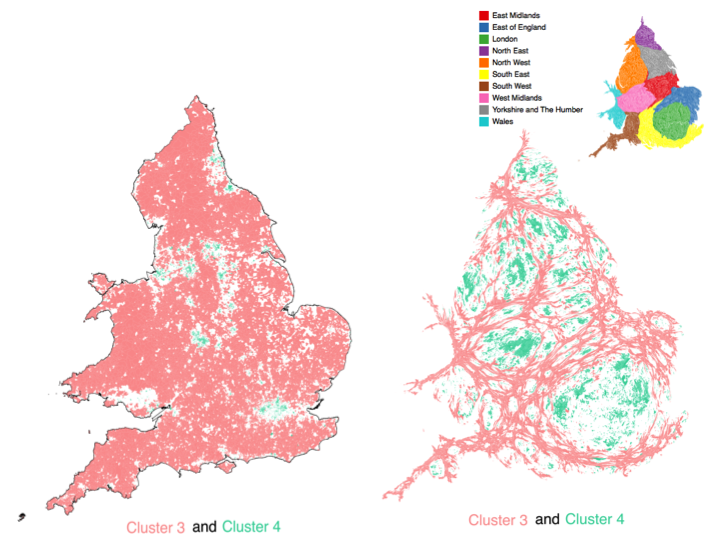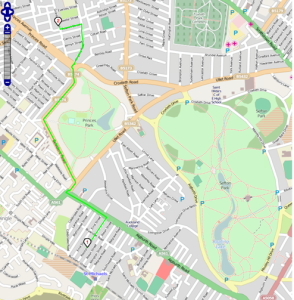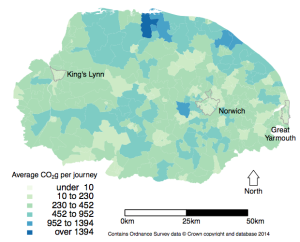This week I have run two courses on ‘Introduction to Using R for Spatial Analysis’ which have been very successful. Both courses sold out, with 15 people attending in Liverpool and 20 in London. We had people with a wide range of GIS and R experience, ranging from no experience in either GIS or R, to significant experience in one but little in the other.
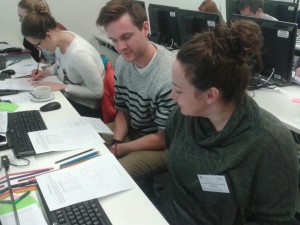 We covered the basics of using R through the RStudio interface, which I find makes R easier to understand for newbies! I certainly found it much easier to learn R using RStudio, and still use it everyday for my R work (I’ve opened the native R interface maybe twice since I started using it!). We also looked projections and coordinate systems (which were at the bottom of a GIS problem a colleague had today) and at spatial data representation, particularly how to create a representative, truthful choropleth map, and I made use of a blog post about this very issue, which I recently tweeted.
We covered the basics of using R through the RStudio interface, which I find makes R easier to understand for newbies! I certainly found it much easier to learn R using RStudio, and still use it everyday for my R work (I’ve opened the native R interface maybe twice since I started using it!). We also looked projections and coordinate systems (which were at the bottom of a GIS problem a colleague had today) and at spatial data representation, particularly how to create a representative, truthful choropleth map, and I made use of a blog post about this very issue, which I recently tweeted.
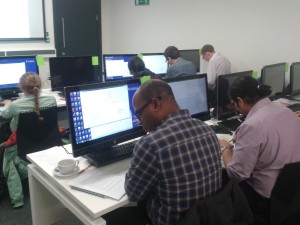 We also had a number of very interesting discussions about the pros and cons of R vs other GIS software, such as ArcGIS or QGIS, as well as other languages, such as Python. Each has their own pros and cons, and in my work I regularly use a mix of these, depending on what I am trying to achieve.
We also had a number of very interesting discussions about the pros and cons of R vs other GIS software, such as ArcGIS or QGIS, as well as other languages, such as Python. Each has their own pros and cons, and in my work I regularly use a mix of these, depending on what I am trying to achieve.
I am also in the process of developing an intermediate course that will focus more on spatial analysis. If you are interested in finding out more about when either the basic or the intermediate courses will be run again, please send me a message (using the contact form on this site) and I will add you to a list to hear about future courses.
All of the material from this course is freely available, and hosted on GitHub. Head over to http://github.com/nickbearman/intro-r-spatial-analysis and you can view the material yourself and work through it at your own pace. You can even use it to contribute to new teaching material, and if you do, please also make your material available through Creative Commons so others can benefit from it as well.
Cross-posted at http://geographicdatascience.com/blog/training/R-for-Spatial-Analysis-Courses-in-Liverpool-and-London/.
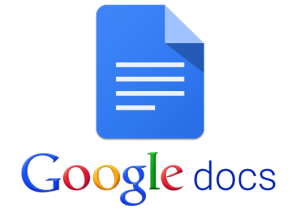 Original (30/11/2015): Just recently I have had an article accepted (but not yet published) that I wrote using Google Docs. It was a collaborative article from a
Original (30/11/2015): Just recently I have had an article accepted (but not yet published) that I wrote using Google Docs. It was a collaborative article from a 